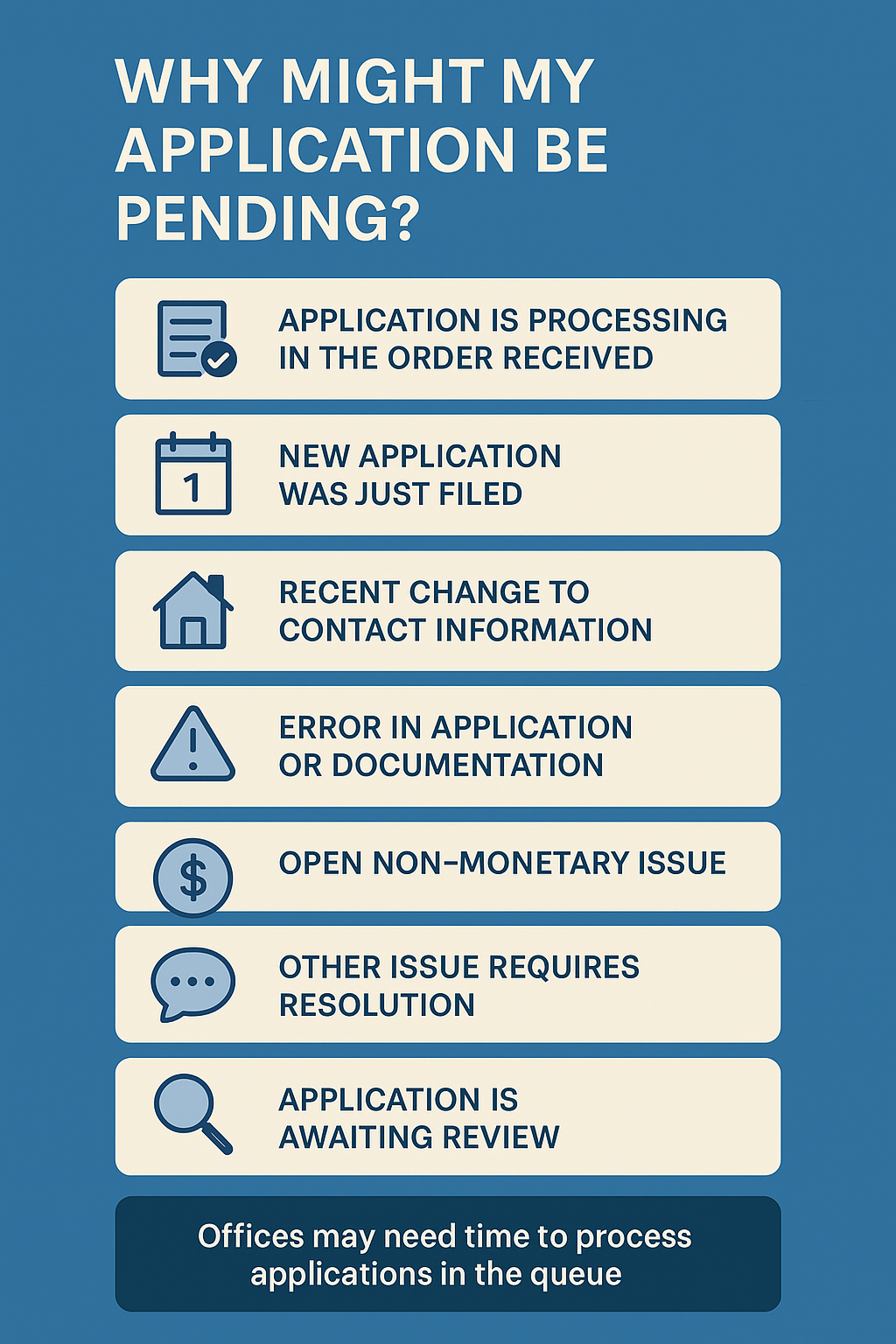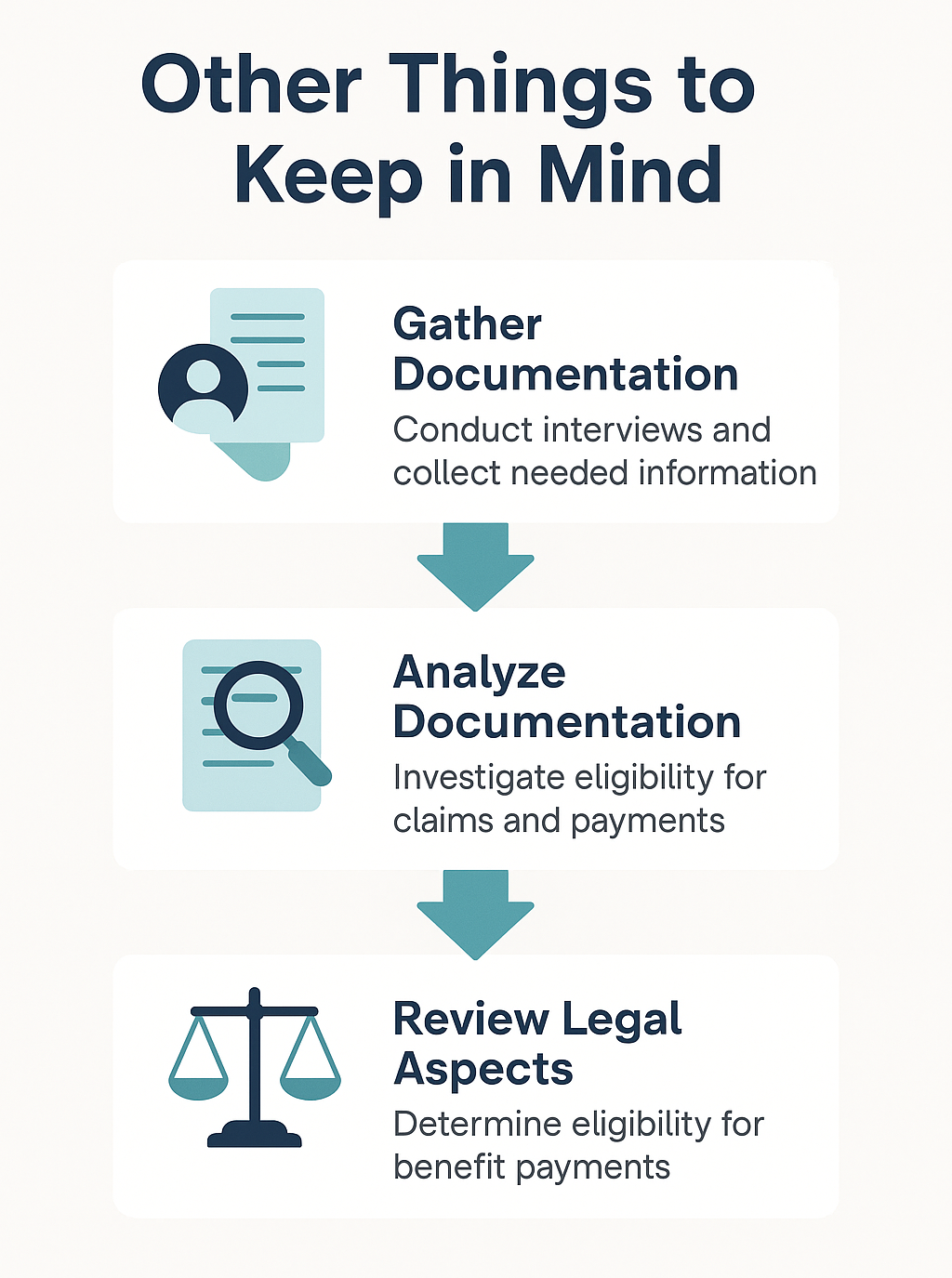Is your Social Security application stuck in the “pending adjudication” stage, and you don’t know what it means for your UI benefits?
You’re not alone. Hundreds of people face pending adjudication daily. Whether you’re moving your address or are applying for unemployment separation pay (or other) benefits anew, the problem might surprise you.
After the first mention, it’s important to clarify that pending adjudication means your claim or application is still under review, and the organization requires additional information before making a final decision. You may be required to answer questions or provide further details during this process to help the agency assess your claim.
For example, if you submit an application for unemployment benefits but your eligibility documents are incomplete, your case will remain in pending adjudication until you provide the necessary paperwork. While your claim is pending, be sure to continue any required reporting or certifications to maintain your eligibility.
During this time, the existing situation remains in effect until a final decision is reached, especially in cases appealing prior denials. If your claim is denied, you may have the option to file an appeal to challenge the decision.
In some cases, there is nothing you can do to speed up the application as an employee. You might just need to wait for the application to be reviewed by the relevant office. In other cases, doing what is required of you should be enough.
What Do We Mean By “Pending Adjudication”?

If your application is “pending adjudication,” it means that fact-finding information about you or your employer is under review. It is typically a non-monetary issue that needs resolving. Usually, this means that your application is under some review stage, and additional action is required on your part.
In most cases, the responsible office or department that is reviewing your claim is trying to determine if you meet the eligibility requirements to receive benefit payments or not. This might include background checks on your previous employers and your employment history as well as other information about you.
Certain forms, such as the Application for Employment Authorization (Form I-765), are used to verify identity and eligibility during the adjudication process. It is important to carefully follow the official instructions provided with these forms to ensure proper completion and submission. During this process, the office gathers details and conducts an investigation to establish your eligibility.
A determination will be made based on the evidence and details provided. Sometimes, a separate determination is issued for different issues within your claim. The adjudication process involves an impartial authority reviewing evidence to determine the rights and obligations of the involved parties. Once your claim is processed, you will receive a determination.
When the application is in the “pending adjudication” process, more time is needed for the application to be reviewed. Sometimes, unemployment adjudication can take a few days or weeks before you know whether you’ll receive separation pay or other benefits. Your eligibility will be determined after the investigation and review of all submitted evidence.
If there is an underlying issue that needs to be resolved, then it might take even longer than that. For instance, you might be required to send new documents to the relevant office or you might need to provide additional information to complete this stage of the application. You may be asked to submit additional evidence to support your claim.
Why Might My Application Be Pending?

There might be several reasons why your application might be stuck in the adjudication process. The most common include:
- The office just needs time to process your application. Your claim will be processed in the order it was received.
- If you’ve recently filed your application, it might take some time to review it. Make sure to file all required documents promptly to avoid unnecessary delays. Your claim is considered filed once your application has been submitted.
- In most cases, the delay might be down to simple bureaucracy or administration.
- Another reason might be if you’ve recently moved your address or changed contact information. If this is the case, you might need to report the new address/contact information and wait for the application to be reviewed.
- An error in your application or documentation can cause your claim to be pending.
- An open non-monetary issue can delay the processing of your unemployment claim.
- Insurance companies utilize an adjudication process to evaluate claims and determine their validity and payment amounts based on policy terms.
- There might be another issue that needs to be resolved. In that case, the relevant office will contact you and give additional information and directions. You may receive a notice from the office requesting further action or information. If that doesn’t happen and you’ve been waiting for a few weeks or even months, then you should contact them.
The office may reach out to you by phone to clarify your claim, but you can always check your status by logging into your online account. You may also need to report any changes or updates to your information during the process.
A monetary determination is made to calculate your benefit amount, and you can check your determination status online or by contacting the office. The weekly benefit amount is used as a threshold for suitable work and payment calculations in unemployment insurance. You must report your work and any paid earnings for each week, typically from Sunday to Saturday. Not everyone will qualify for benefits, depending on the circumstances of their unemployment claim.
Remember to continue submitting your weekly certifications even if your claim is pending, as weekly certifications are required to maintain eligibility and ensure your claim is processed without interruption.
Remember that the government and its offices deal with thousands of different claims and applications daily. This means that your application might simply be waiting to be looked at by someone.
What Actions Can I Take While Awaiting Approval?
If you’ve been waiting for a while and you want to know what is happening to your claim, then there are a few things that you can do to speed up the process.
Contact your nearest Home Office. The best way to do this is to call them. Alternatively, write to them and ask them about the status of your application. Make sure to keep track of important dates related to your claim, such as the date you file any documents or appeals, and keep a record for your reference.
You should also be ready to provide them with all the information they need about you, making their job easier to help you out. Ensure all required forms are completed and submitted, as timely filing is crucial to avoid unnecessary delays. The timing of your application may be considered in relation to other documents or deadlines.
Ideally, you would want to avoid your application from being passed from desk to desk, which often happens with applications. Since there are hundreds of applications to be reviewed each day, yours might just be at the bottom of the pile. Some common reasons for claim delays or denials include missing documentation, incomplete forms, or issues with verification.
An adjudication officer might also be seeking additional information from you. In some cases, applicants might be invited in for interviews, and companies are also contacted during the application approval process. Employees and business owners may have different requirements during the adjudication process, so be sure to clarify your employment status. Identity verification may be required before your claim is approved, and you may be asked to provide the last four digits of your Social Security number.
So if you’re asked to do something by the officer, it’s best to do it as quickly as possible or when asked to do so. This way, you can avoid waiting for your application to be prolonged, resulting in a faster turnout.
Other Things to Keep in Mind

Perhaps one of the more useful things you can learn to better understand the process is how adjudication officers work.
First, their job is to gather documentation and conduct interviews both with the application and with other parties if necessary. This process of gathering data might take weeks and even months. You might be asked to attend an interview or provide the information needed to proceed during this process.
The next step is for the officer to analyze the documentation and investigate your eligibility for the claims and future benefit payments. At this stage, your application is treated as a petition under review, subject to legal and administrative procedures.
Lastly, they will review the legal things regarding your application, which can also take some time. Once the review is complete, you will be notified of your determination status, indicating whether you are eligible or ineligible for benefit payments.
Benefits.com Is Here To Help You
At Benefits.com, we are here to help you navigate the process and receive the benefits you deserve. Begin today by taking our free eligibility quiz.
We listen to every story and dive deeper into each case to help you out the best we can so you can receive your benefits.
 Benefits.com Advisors
Benefits.com Advisors
With expertise spanning local, state, and federal benefit programs, our team is dedicated to guiding individuals towards the perfect program tailored to their unique circumstances.
Rise to the top with Peak Benefits!
Join our Peak Benefits Newsletter for the latest news, resources, and offers on all things government benefits.





















